The Weta FX team with Chris White (VFX Supervisor) and Aidan Martin (Animation Supervisor) are back to talk about their work and especially about Pogo for the 3rd season of The Umbrella Academy.
You are back in the Umbrella Academy universe for the third time. How did you feel about it?
Chris White (CW): It’s always a fun show with an interesting character. Pogo is constantly evolving into something different each season – we’ve developed a very young Pogo, an older gentleman, and now we’re creating an alternate timeline Pogo with a very different story.
Can you elaborate on the new Pogo?
CW: This season’s Pogo has a couple of different personas. First, we get to see sensei Pogo at the Sparrow Academy. He is younger and more athletic than when we first met him in season one.
After leaving the academy, his transformation becomes even more extreme. He enters the biker gang lifestyle, introducing us to more muscular, tougher, battle- scarred Pogo.
What are the main changes that you made since the previous season?
CW: For the sensei Pogo, we spent considerable time on his costuming, particularly his tracksuit, crafting a garment that is reminiscent of the comic book and real-world silky tracksuit material.
With biker Pogo, you can see many changes – he has scars on his face and we gave him a biker groom with a ponytail, moustache, and long beard. We bulked up his muscles and put him in a leather biking outfit. We also added a tattoo on his shoulder designed by Gabriel Bá.
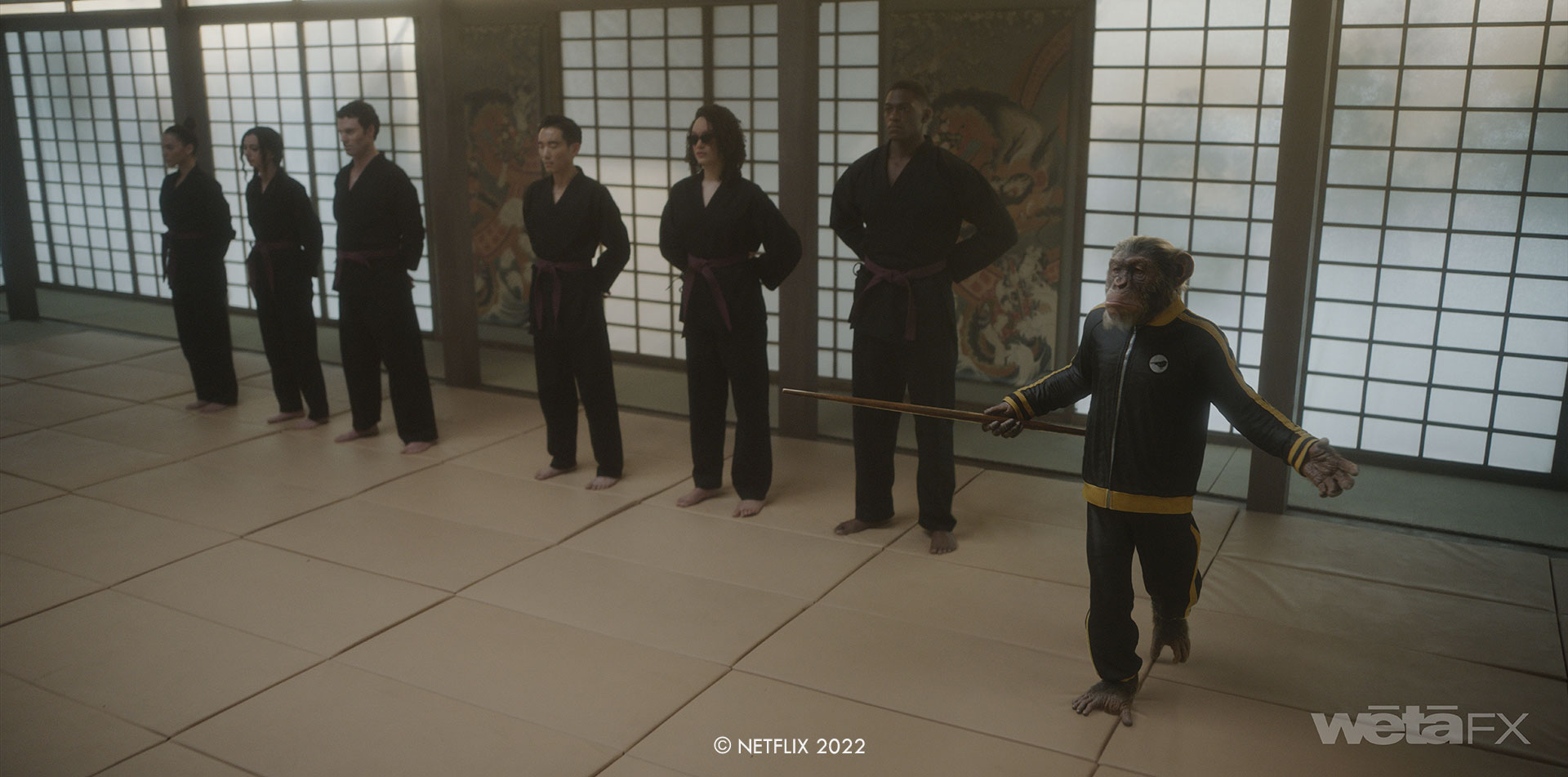
How has his new personality affected your work?
CW: Apart from Pogo’s design and look, his personality comes through in his animation, and what he’s doing – he’s smoking cigarillos, has tougher postures, and is more imposing.
Aidan Martin (AM): While his physicality has changed, he’s far from just being muscular and dumb. He’s still Pogo but his attitude about life has really changed, so he carries himself very differently. He’s got a different weight and moves in a different way – he’s more physical than he was, particularly in season one when he was a much older, frail old man. Now he’s more of a gym bro, a little more thuggish…
CW: But still an intellectual.
AM: He’s still an intellectual, but I always looked at him as more of that Ray Winstone-style English gangster. That was always my inspiration for the biker Pogo attitude.
Can you tell us more about the animation work?
AM: We didn’t stray too far from our original workflow that we laid out in season one. It was all very familiar – we used the onset performer Ken as our guide and we referenced Adam Godley’s facial and voice performance, as well as using our Weta FX colleague Craig Young as a motion capture performer to tie all of that together. It was all the same process as the first season and incredibly efficient. After three seasons, you get to be pretty slick at getting through that pipeline.
In terms of performance, I think this Pogo was a little easier for Craig to get into because Craig is younger and fitter, so he could be a little more naturally himself. Comparatively, it’s more difficult to get the older, more frail feel of the earlier Pogo, so that required a little more work to get the physicality across. That’s why we introduced the walking stick in season one, to give him a prop to age him, whereas once we took that away for this season, he’s standing up more, shoulders back, and sauntering around rather than hobbling like he used to.
CW: And wouldn’t you say this season, more than any other, he has more attitude?
AM: Yes, he’s much more assertive. Even in the dojo scene when he’s with the Sparrows, he’s the boss.
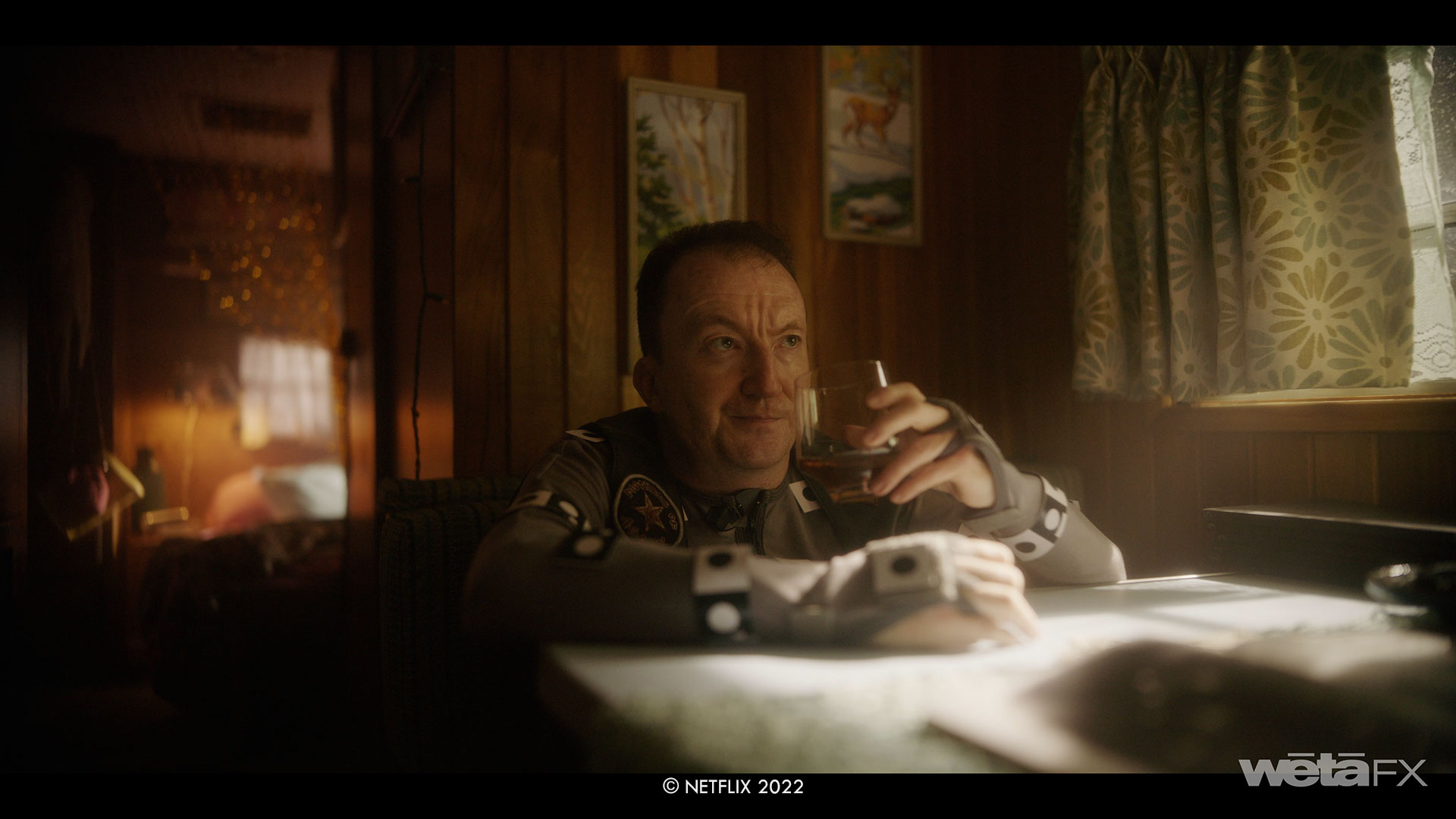
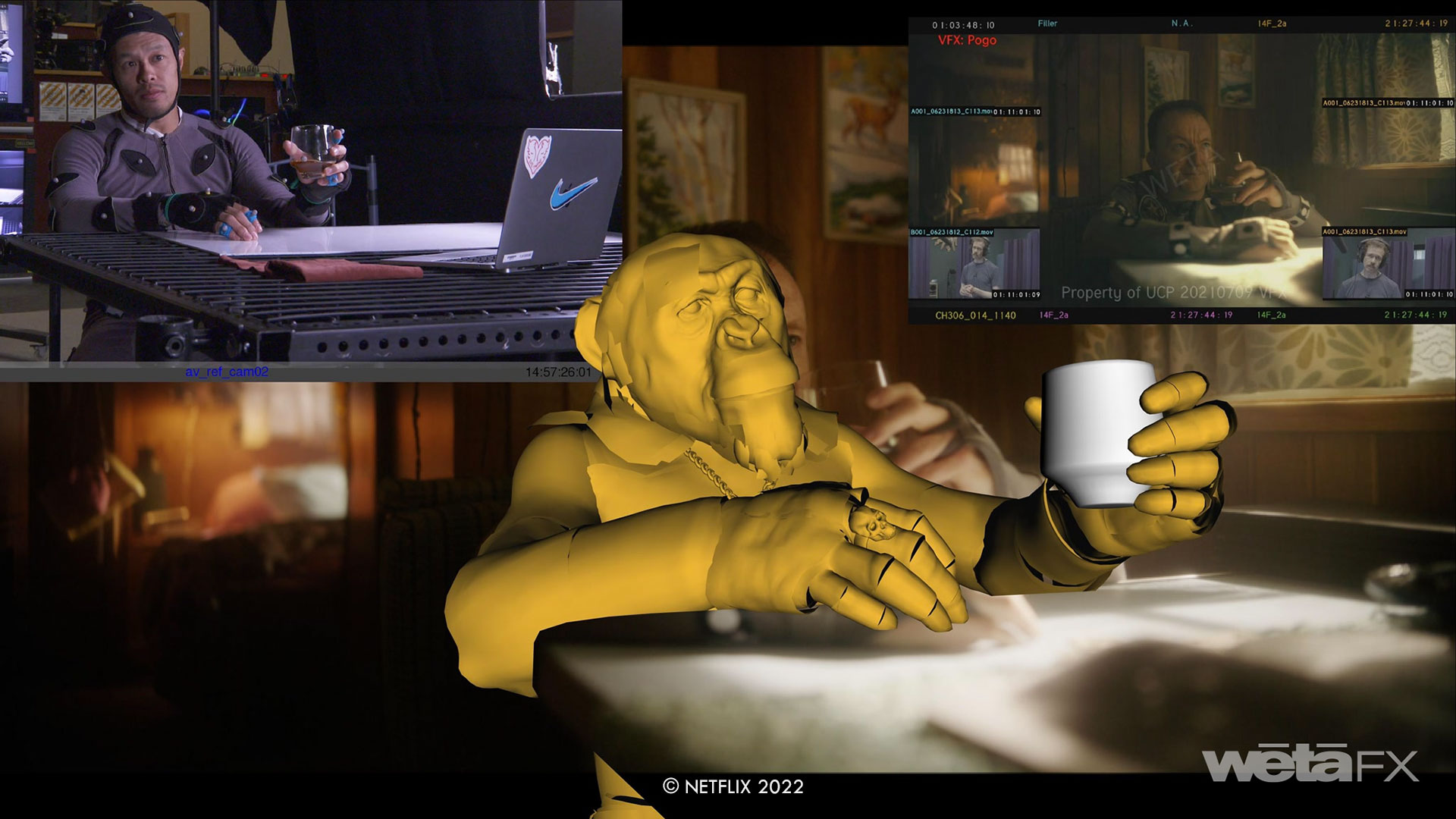
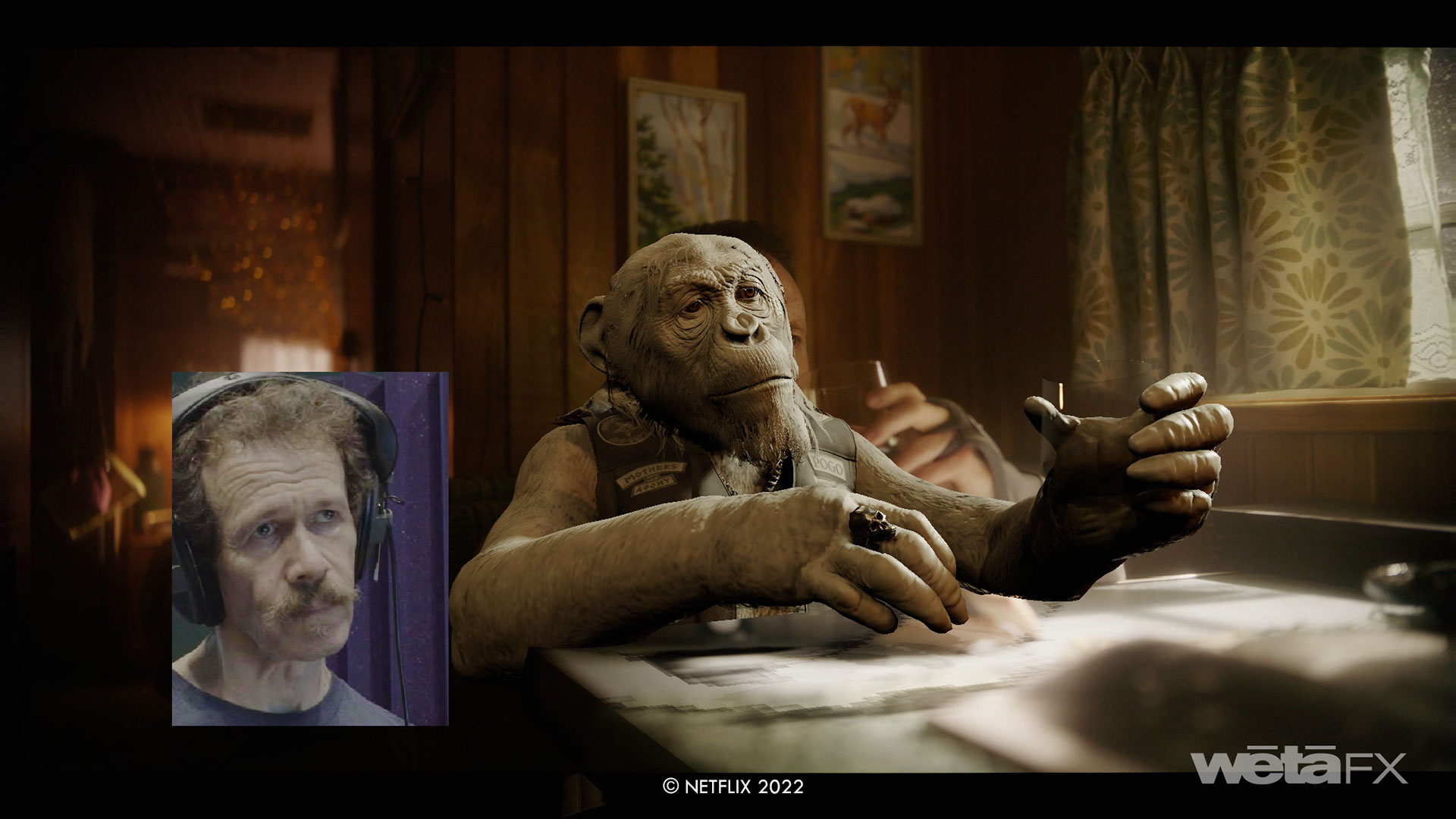
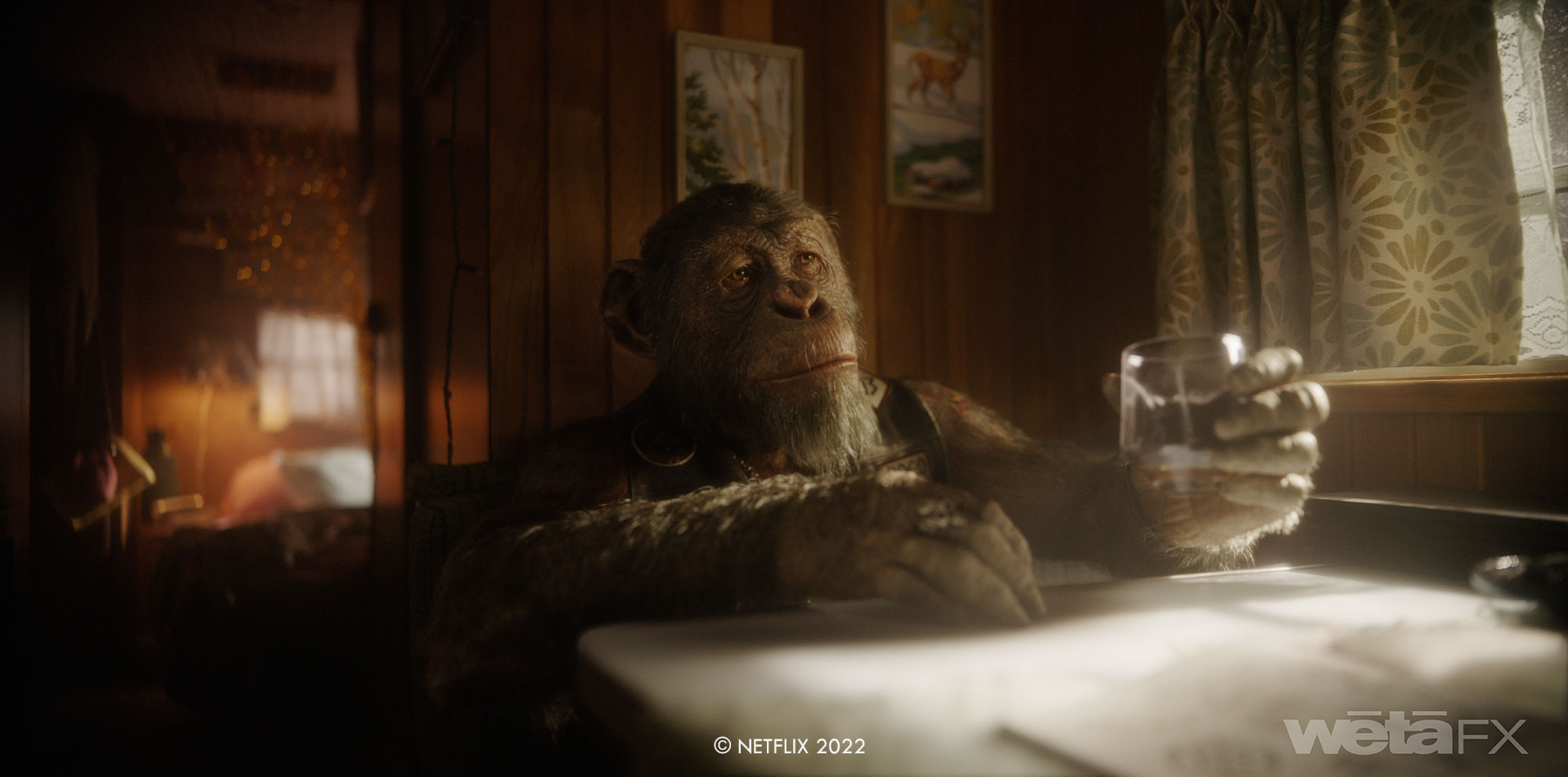
Can you elaborate about your impressive work on his eyes and fur?
CW: The technological approach is similar to previous seasons, but we did spend a lot of time lighting the eyes, particularly for the tattoo parlour. We wanted to ensure his eyes read correctly and set the mood for the shots.
AM: For animation, particularly in relation to the eyeline, I’ve been battling the same problem for several years and several seasons now. It’s always the same thing – there’s the intention of the performance and the actual shape of Pogo’s brow, compared to how inset his eyes are. Sometimes the head wants to hang low and the camera angle is nice and high, and if you honour Ken’s performance the eyes are always looking through the brows, so you have find the balance between honouring the performance and making the logistics work within the physical limitations of the his facial structure.
Things that specifically came into play this time around were that he had a longer beard, as he had grown out his goatee, and he had this man-bun topknot, which added a level of complexity to make sure it was clear of cloth sims and things like that.
How did you create his various clothes?
CW: The technology we developed in season one, Woven Cloth, allowed us to create every thread and fibre so the garments respond correctly to light. It also enabled us to create a variety of materials – this season, we had both extremes with the silkier tracksuit and stiffer denim.
Can you tell us more about the lighting challenges?
CW: Some trickier lighting challenges we faced were with the scene in Pogo’s trailer with Five, because most of the light came through a window and there was a level of haze within the room. Anytime you switch back and forth between a real character and a CG character, you have all of these little things you have to get just right to ensure the lighting conveys both the mood and the realism when putting them face to face.
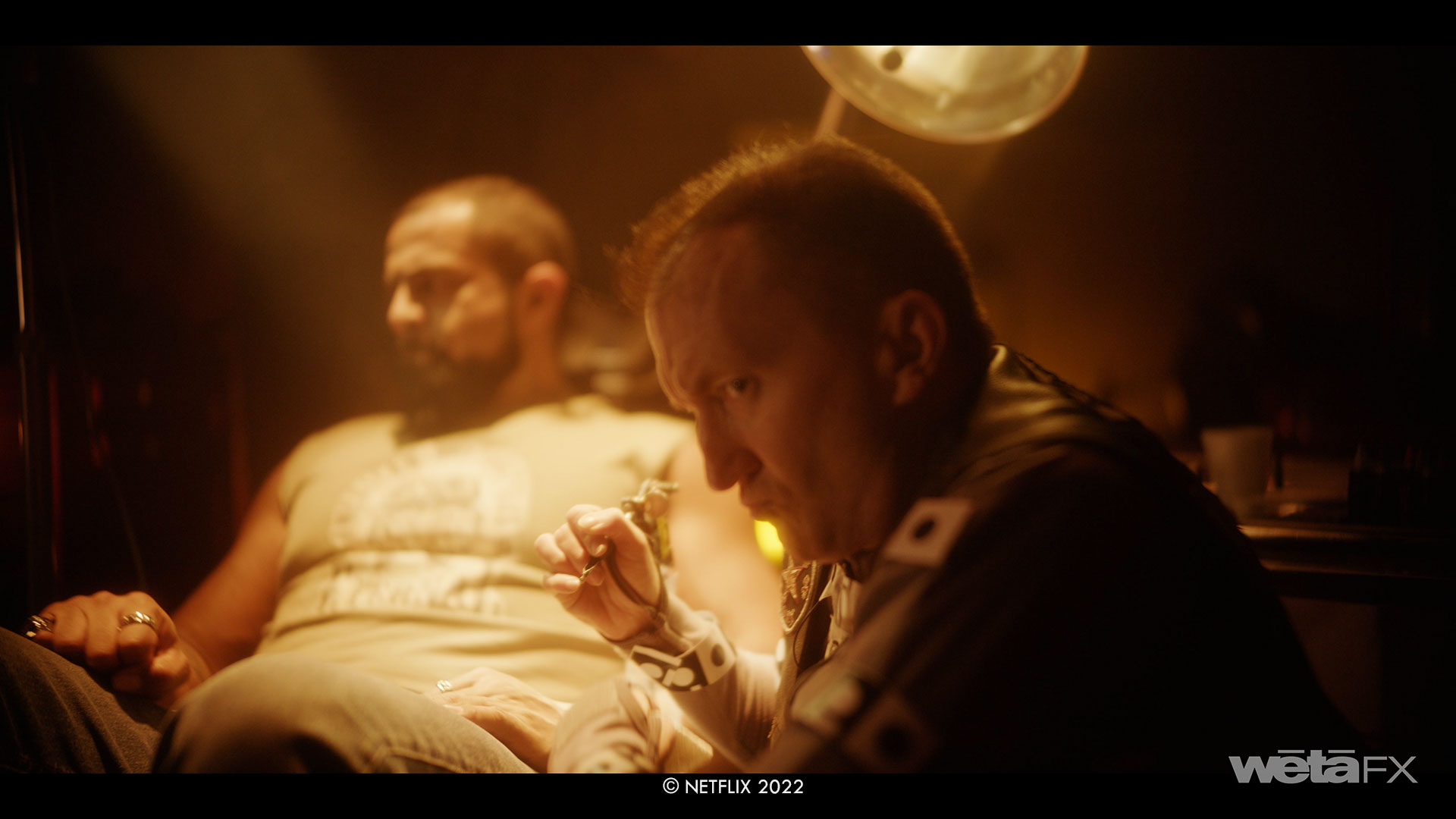
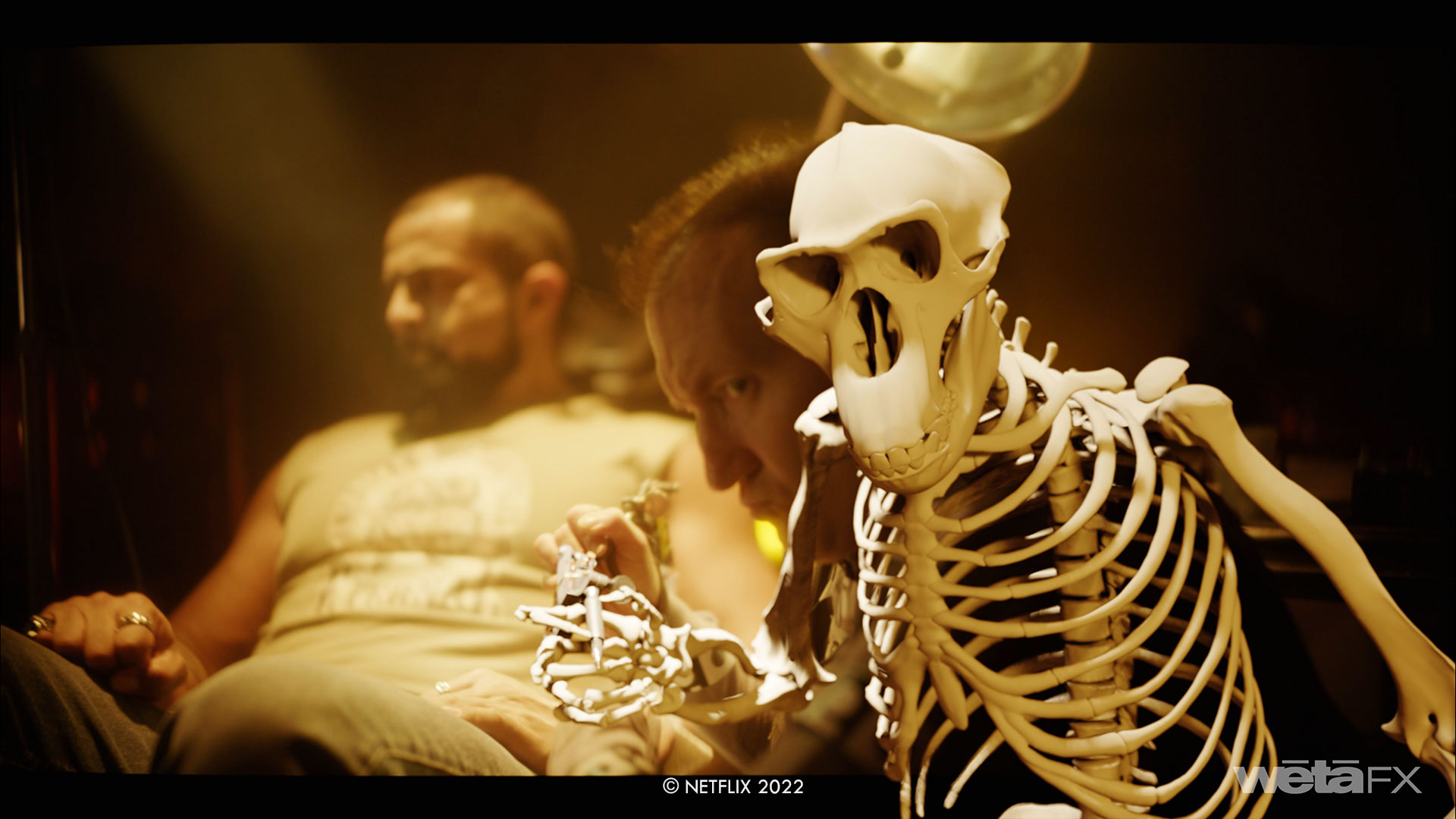
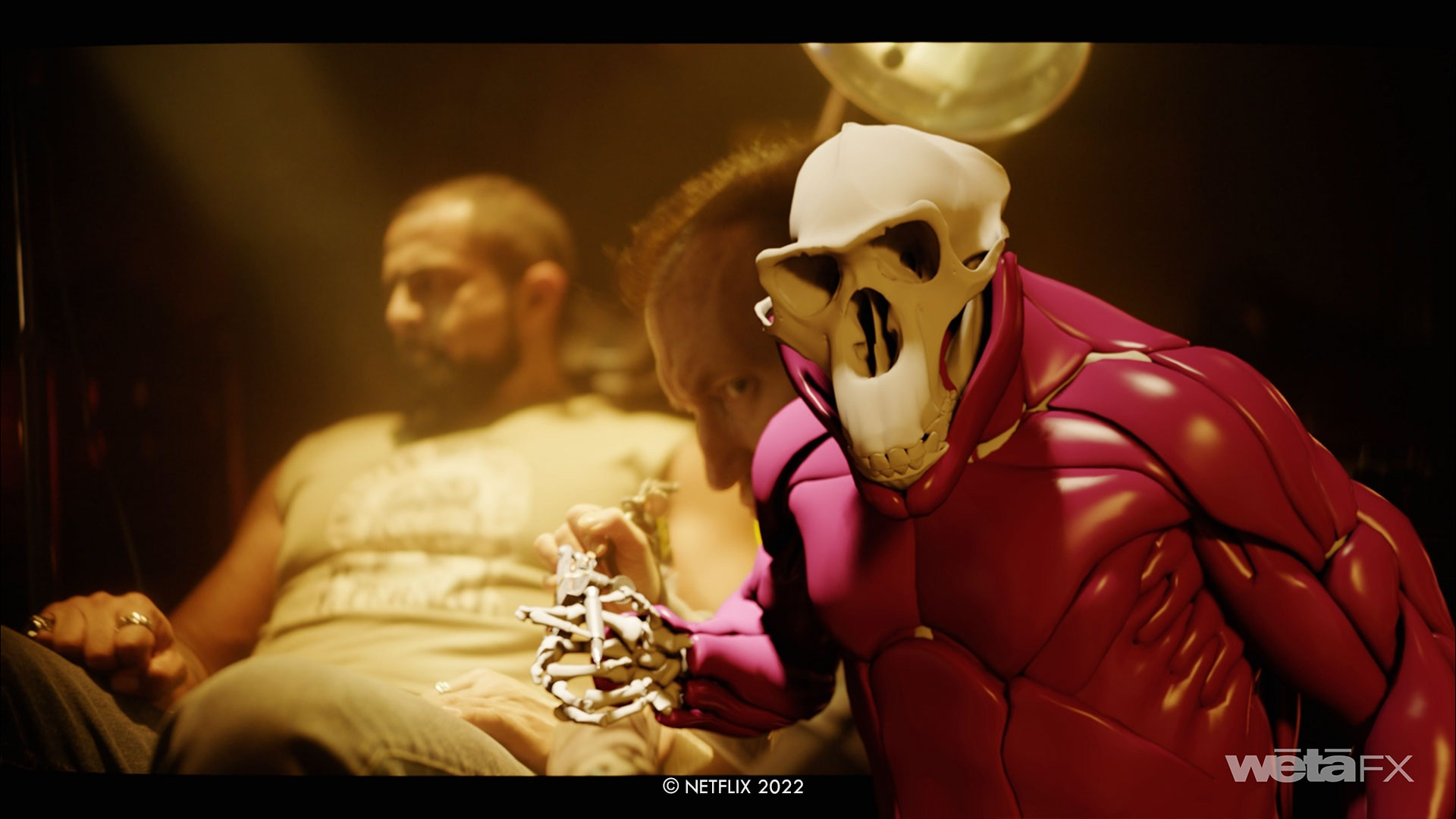
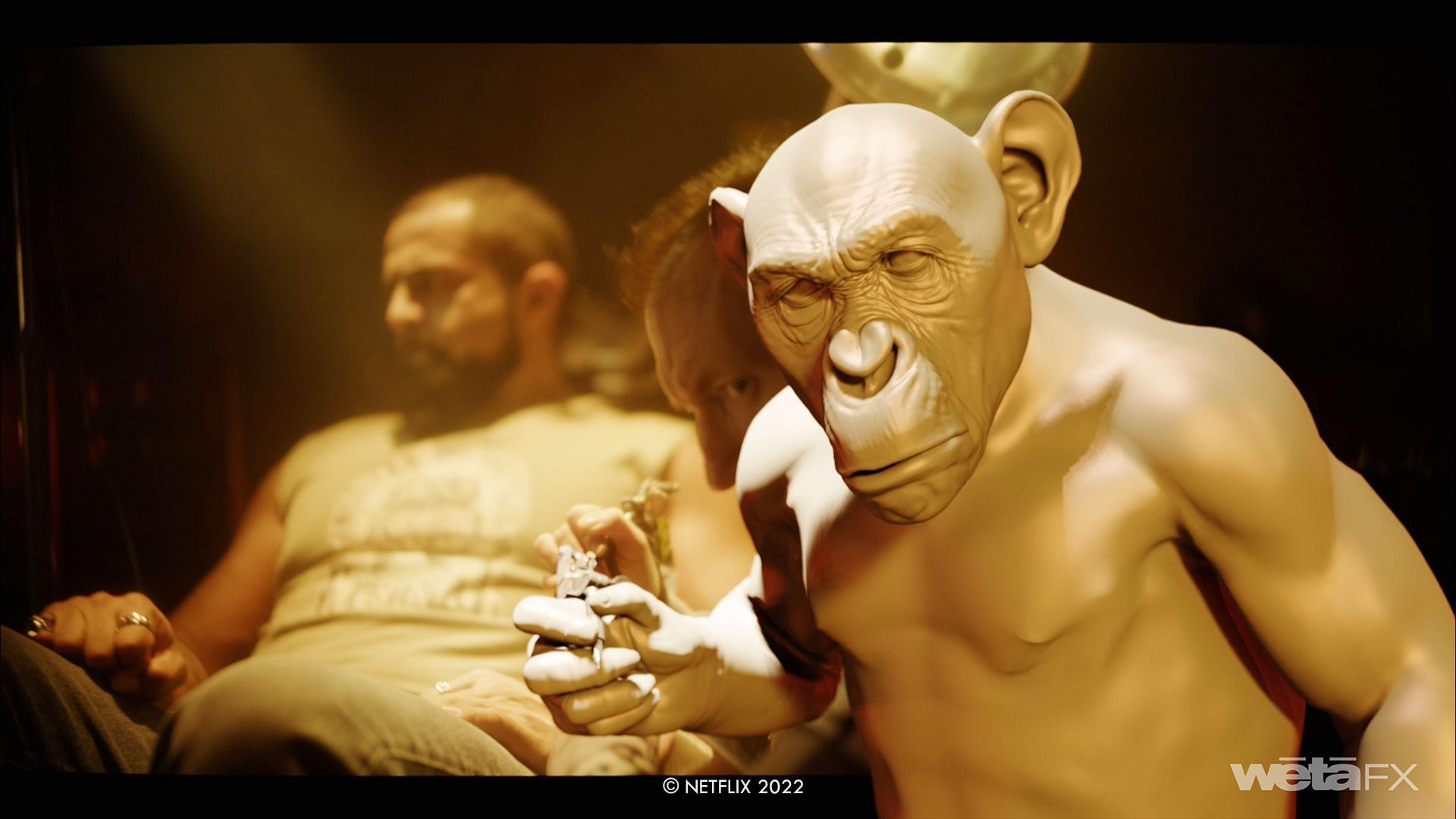
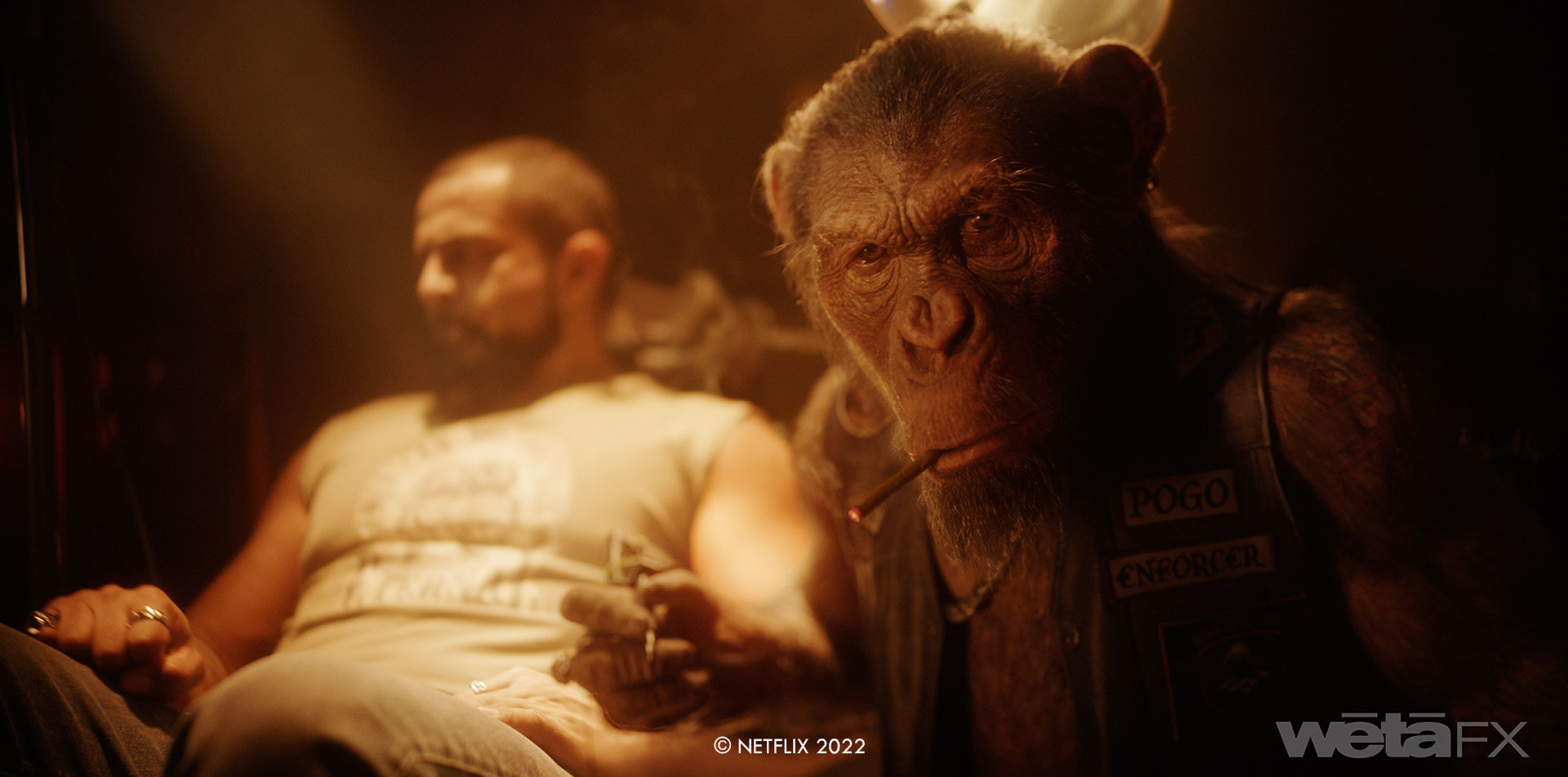
Which sequence or shot was the most challenging?
CW: Some of the trickier shots were the motorcycle shots. Due to his scale relative to the bike and the fact he travelled through an environment, the shots became the most complex.
AM: Yes, the two motorcycle shots were definitely challenging, and not just from a lighting perspective, but motion too, as we had to recreate that cyclorama look – when there’s a moving picture in the background with a static character. They shot it on green screen with a stationary bike, with the bike on the back of a trailer or something, then we had to create Pogo actually moving through that space. So you would get things passing him and all of the light interaction as he moved past things – that took a bit of engineering.
It was challenging to make it look like an ape was actually riding a motorcycle, because he always looked like a toy or a little kid on the back of the bike. It was about finding a balance between him feel real on the bike and him feeling like a mannequin just stuck on there. We had to cheat a little and scale him up slightly in certain shots to achieve the right look.
Was there something specific that gave you some really short nights?
CW: There wasn’t anything particularly stressful because we have worked on this show three times now, so we could plan for a lot. However, the scene with Pogo and the whisky glass was interesting – getting Pogo to handle drinking the whisky was a little tricky, but it generally worked out. When we were handing-off props between Pogo and Five, those shots became more challenging.
AM: For me, one of the more challenging moments was finding creative solutions to deal with performance choices that they made onset – in the bar scene they had Ken cleaning a tattoo machine with a tissue and things like that, so all of a sudden you had it in both hands, and he was using it as an acting choice across a few different shots. We offered up some suggestions to change that because we didn’t really want the continuity challenges of a tissue and how fiddly the motion with the tattoo machine is. We came up with a couple of things, like him wearing his old glasses and taking them off, things like that, but they eventually the glasses went away again as it made him look too old and a bit too intellectual, which wasn’t quite the feeling they wanted. In the end, we worked around it and it all turned out fine, but those were some of the more heightened moments. With Everett and Steve Blackman, they’re pretty open to us making those suggestions – they’re very trusting, which is great.
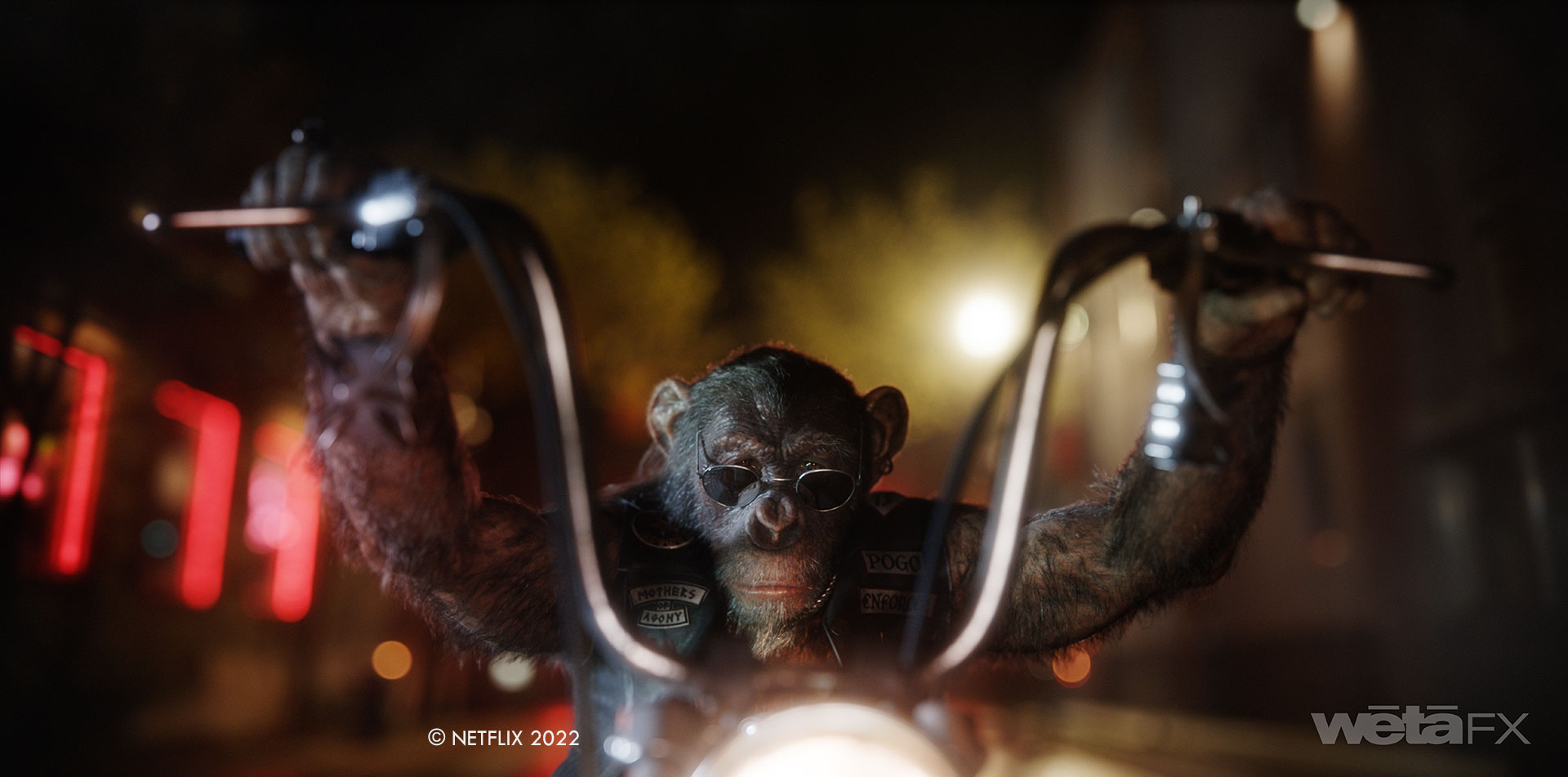
What is your favourite shot or sequence?
CW: I like the bar scene with the reveal of Pogo turning to face Five. It’s funny because it didn’t start as my favourite shot – I always thought there wasn’t something right about it. Aidan and I talked about it, and he added in some little eye darts and things that gave him a little more character. I then worked with the lighter and she went in and finessed his eyes – now it’s not only one of my favourite shots but also the one Netflix uses the most for their promotion. So it went from being one of my least favourites to us spending more time with it and it becoming one of our favourite shots.
AM: Yeah, we pushed to have the cigarillo added to that scene. My favourite is the shot following when he actually takes the cigarillo out and says the “I don’t tattoo children” line. That’s my favourite shot.
What is your best memory on this show?
AM: Chris and I were working with Craig on the mocap stage and we set it up with the lights for the whiskey glass, so it looked like a proper film set. It was a nice moment because sometimes it feels like we are only working on computers.
CW: With some of the project worked on remotely, it was one of the opportunities we could all get together in person, so that was nice.
How long have you worked on this show?
CW: Weta FX worked on season 3 of The Umbrella Academy from Oct 2020 to Dec 2021.
What was the VFX shots count?
CW: We delivered 66 shots in total.
What was the size of your team?
CW: The core team was roughly 20 people, broadening to around 40.
What is your next project?
CW: I’m currently working on Black Panther: Wakanda Forever, which is exciting.
AM: Unfortunately, I can’t mention the project I’m working on at the moment.
A big thanks for your time.
WANT TO KNOW MORE?
Weta FX: Dedicated page about The Umbrella Academy – Season 3 on Weta FX website.
Netflix: You can watch The Umbrella Academy on Netflix now.
© Vincent Frei – The Art of VFX – 2022




